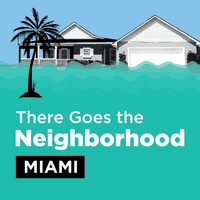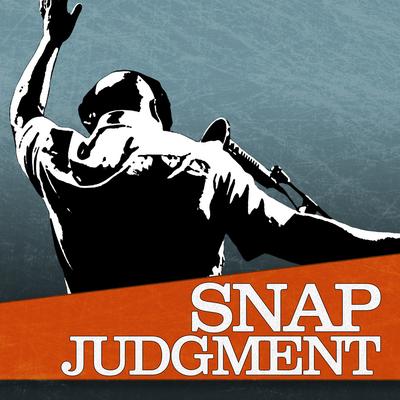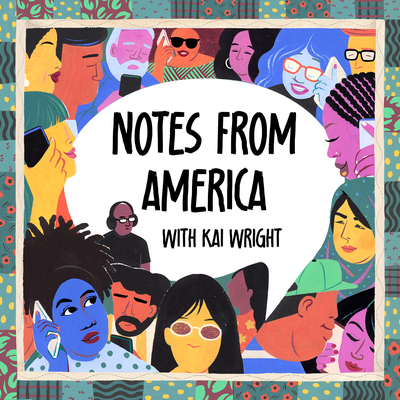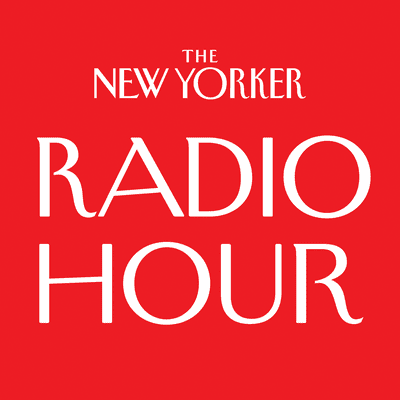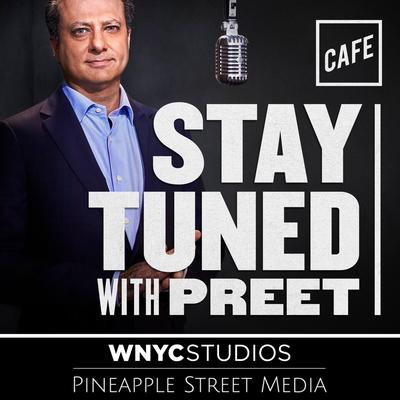Coffee, Pizza and Beer
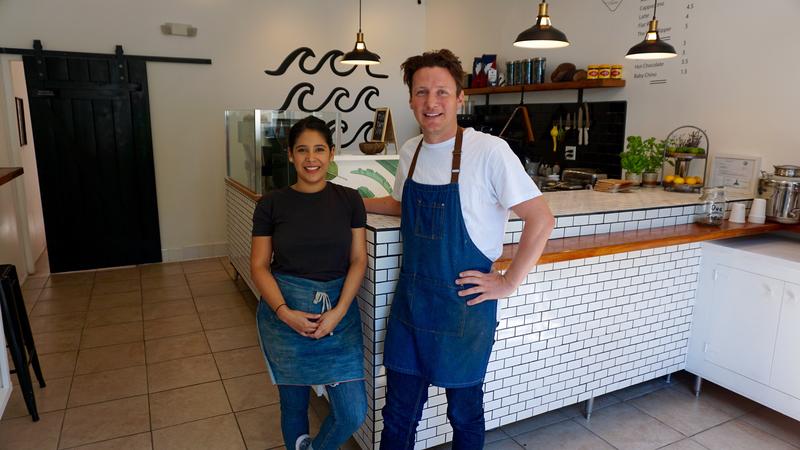
( Saul Gonzalez )
Speaker 1: We don't need more coffee shops, because we've seen it all already. There's a lot of shops opening up and they're raising their prices. A lot of these people, they come in and then they wreck up the prices and then when stuff like this comes out, it starts pushing out little businesses out of it, which isn't fair for us. They're not there for the community, they're there for themselves to make money
Speaker 2: Word travels fast nowadays with Instagram but everyone loves their local community little hangout. I feel like this provided that for our neighborhood.
Speaker 3: I think there's always going to be people that-- They've lived in a neighborhood, it's been a certain way their whole lives and they're going to be a little bit resistant to that change. Yes, of course, but we do everything that we can to make people in this community especially feel welcome here.
Speaker 4: Even other businesses that started out on the weekends are now going into full-time year-round business because the traffic's there.
Speaker 5: Literally this is right in the middle of an area, which has been traditionally Latino that is growing in its diversity. I think they've made a very brilliant move in moving here because they're getting both an existing customer base as well as a new evolving customer base.
Saul Gonzalez: Hey, Anna, can we play a little guessing game?
Anna Scott: Okay.
Saul Gonzalez: I'm going to name a couple of places, you tell me the one that says gentrification to you.
Anna Scott: Okay.
Saul Gonzalez: Baskin-Robbins 31 flavors, or Salt & Straw Ice Cream.
Anna Scott: [chuckles] Salt & Straw.
Saul Gonzalez: 24 Hour Fitness or Namaste Yoga. Either way, am I saying Namaste right?
Anna: I think so.
Saul Gonzalez: Okay, go on.
Anna: Namaste Yoga.
Saul Gonzalez: TGI Fridays, or a restaurant called Forage.
Anna Scott: [chuckles] Obviously, Forage.
Saul Gonzalez: Obviously. Yes, it's not a hard game I know. The point is gentrification is so tied to neighborhood commerce, where we shop, where we eat and where we hang out. When swankier businesses open in a neighborhood, they might make the people who already live there feel uncomfortable. Leaving the impression those stores and restaurants and what they're selling isn't really for them.
Anna Scott: Yes, people can feel a kind of retail alienation, like this woman who talked to our producer, Miguel Contreras.
Ventura: [foreign language]
Miguel Contreras: That's [unintelligible 00:02:23]Ventura. She lives in LA's rapidly gentrifying Highland Park neighborhood. She said that most of the people around here are still working class, but that the newer businesses opening in Highland Park don't help them because they're just too expensive.
Ventura: [foreign language]
Miguel Contreras: She just said that the fruits that she used to go to, that they raised the price of fresh-squeezed juice from $3 to 5 bucks. Then I asked her who all the new places are for
Speaker 6: [unintelligible 00:0:52]
Ventura: [unintelligible 00:02:53]
Miguel: [unintelligible 00:02:55] No translation needed.
[music]
Saul Gonzalez: I'm Saul Gonzalez and this is There Goes the Neighborhood, LA. In this show the merchants of gentrification, we'll sample coffee, pizza, and beer.
Speaker 7: A suspect is caught on camera vandalizing a new coffee shop in Boyle Heights. Now, tonight the owner believes that crime was a warning.
Speaker 8: Yes, many people in the area say new businesses are coming in and driving up the rent for everyone.
Saul Gonzalez: In our last show, we told you about a backlash against art galleries in this same neighborhood, Boyle Heights. When a new coffee house opened here a couple of months back, the backlash widened. Activists marched in front of the business and arguments broke out on the street between customers and protesters.
Speaker 9: Oh, really? When you're supporting gentrifying establishment, you're not standing with the same community you're saying that you're forming your living style.
Speaker 10: Of course, I stand with the community.
Speaker 9: Oh no, because if you did, you would make conscious decisions as simple as where you buy a cup of coffee. Where you buy your coffee matters, where you're putting your money in our community matters.
Saul Gonzalez: Why the passion over a single little business opening? Well, coffee houses, especially the kind selling single-origin beans and almond-milk cappuccinos. They've become the clichéd symbols of gentrification but who are these people selling us our fancy lattes and what does it look like from their side of the counter?
Speaker 11: I'll get a macchiato.
Lorena Jurado: Okay. Any nibbles today?
Speaker 11: No, not today.
Lorena Jurado: You got it, Macchiato.
Saul Gonzalez: This coffee house in LA's Glassell Park neighborhood just opened three months ago. It's called Little Ripper, Australian slang.
Rex Robertson: A Little Ripper is-- It's a good little thing. You can yell it out when your team kicks the winning goal or you can tell a kid he's a little ripper. He's a good little thing.
Saul Gonzalez: That's Rex Robertson and Lorena Jurado, the married couple who own Little Ripper and also live in the neighborhood. Rex is originally from Melbourne, Lorena from Quito, Ecuador. This is their first small business together.
Lorena Jurado: Oh my God, it's been amazing. Hard work, absolutely hard work, we're exhausted.
Saul Gonzalez: All those super gentrified places like Highland Park and Silver Lake are close, this middle and working-class neighborhood of apartments and single-family homes hasn't really seen a lot of new businesses open. Even as young professional families who are great potential customers, have been moving into the area. Many locals who walk over from their homes say they were thirsty for this kind of neighborhood hangout.
As she waits for her order, I meet Adrienne Leone, who lives in the neighborhood. Do you think a coffee house sends a message that, “Yes, the neighborhood's a bit more on the map now.”
Adrienne Leone: Definitely, and this place looks totally trendy. It's very different from some of the other small businesses around. On this block, mainly, there's multiple car-repair shops. It's nothing that you want to go and hang out in, that didn't really exist before. This is nice, where we can just get to meet our neighbors, which we've met so many more neighbors than before.
Saul Gonzalez: I know how she feels because this is my neighborhood and as a lover of coffeehouses, I too I'm delighted Little Rippers here.
Speaker 12: [unintelligible 00:06:17] and-- Well, that's black coffee.
Saul Gonzalez: Little Ripper is cool-looking, gleaming white walls, a counter area and laid with subway tiles, freshly baked pastries on display behind glass, but Lorena and Rex say they went through financial hell to create all this charm.
Lorena Jurado: That was probably the hardest because you're literally bleeding money. It's all my savings and my 401(k) life pension, everything's here and just to be hit with, “Here you go, you have to pay another fee, you have to pay another permit.”
Saul Gonzalez: When they spent all their own money, they turned to Kickstarter, raising over $16,000. A lot of that from locals who really wanted to see the coffeehouse in the neighborhood. If I had put in some dough to your Kickstarter campaign, what were some of the things I would have gotten back?
Lorena Jurado: Free coffee.
Rex Robertson: You get a couple of free coffees, you get a hat, you get a slap on the back and a big thank you and a hug every time you walked in the door.
Saul Gonzalez: I get a lot of respect and appreciation in return for your Kickstarter dough.
Rex Robertson: Absolutely yes.
Saul Gonzalez: Since it opened, business is boomed at Little Ripper, partly because of word of mouth, and a carefully curated Instagram page. Rex and Lorena know that a coffeehouse like theirs might leave a bad taste in some people's mouths as too trendy, or a stalking horse, or gentrification. Lorena has little patience for that criticism.
Lorena: I'm going to be honest here. What about the Starbucks? What about the McDonald's and what about the big-chain places? What do you say when those places come into your community? I think supporting a mom-and-pop shop and supporting a small little business is better than supporting a Starbucks and supporting a big corporation. I think that's the missing point.
Saul Gonzalez: That you are human-scaled.
Lorena: Yes, and we're a small business. We're just trying to make it. We live in the area. We want to better it and I think those are missing points.
[music]
Saul Gonzalez: It's not super controversial to open a new business in a neighborhood like this corner of Glassell Park, which is still sleepy. The spot where Little Ripper sits was empty before Lorena and Rex got there. It can be a very different story when a new business replaces an old one. Next, up case [unintelligible 00:08:34], Anna Scott takes us out to eat in Echo Park, with the story of battling pizzerias and what it means to be authentically of the neighborhood.
Anna Scott: If businesses are like barometers of neighborhood change, the ones in Echo Park show a community split between old and new. Along Sunset Boulevard you see the new lessons health food store across from the old Guadalupana market and the expensive wood cat coffee shop beside the old Botanica, selling herbal remedies, incense and candles. Right now, I'm sitting outside near Sunset and Alvarado Street with Israel Palacios. He's 37 years old, and for more than 20 years his family owned a pizza restaurant off the block from here, Pizza Buona.
Israel Palacio: I have a lot of customers that have traveled the world and whatnot, even from New York. Let's say that the pizza is just incredible.
Anna Scott: Pizza Buona was cozy and kitschy with wood-paneled walls and Frank Sinatra on the Jukebox. Am I making up that there were red-checkered table clothes?
Israel Palacio: That's a cliché. We actually had off-green. We have white. We had beige. We had different table-- We never had the checkered.
Anna Scott: Two old Pizza Buona signs still hanging on the building. They're red with white letters spelling out pizza. The Buona has been covered up because over the summer, a new pizzeria opened there. Cosa Buona, it's run by local celebrity chef Zach Pollack. Cosa Buona serves a fancier pie, tops with local cheeses and pepperoni. shipped in from the East Coast. Israel hates the sight of it.
Israel Palacio: Instead of being happy looking at my old place or what it's become. A lot of times when I drive by, sometimes I don't look, it's just upsetting to say the least.
Anna scott: It's the name that really makes him angry.
Israel Palacio: He's trying to fool people. Had he gone a different route, Italian food, a different name, I would have been in there, the first person been in there, introduced myself, and said, "Hey man, I'm Israel, nice to meet you. I grew up in this building. Let me see what you've done. It's a great place." We probably would have been friends.
Anna Scott: Now, it does not look like that's going to happen. Rising rent drove Pizza Buona out. It more than doubled in two years.
Israel Palacio: What they wanted me to pay was 7,500 from 3,500. They raised it to 5 and then 5,500, and then by two years, it was going to be 7,500.
Anna Scott: Israel's landlords, two cousins who have owned the building for decades didn't want to be interviewed.
Israel Palacio: At the end of the day, it wasn't something that we could not afford, we could have. The question was, “Was the building worth it at that price?” The simple answer is no.
Anna Scott: Pizza Buona closed at the end of 2015, but last year it reopened. Israel found a new space, half a block from the old one. It's a tiny shop, hidden away in a strip mall but the price is right.
Israel Palacio: It's not what I wanted. It's not what I'm used to, but at that time it was six months without people, with my food, so to speak. By the time I opened, it was nine and a half months. You wait any longer people start forgetting about you, regardless of the history.
Anna Scott: Even though his own business is still alive and well, Israel believes Cosa Buona stole something from him.
Israel Palacio: Gentrification is going to happen regardless where you go. It's either you keep up with the times or you get left behind, simple but as far as with the other guy's taking my old spot it's unoriginal. The way he was raised is very different from the way I was raised, completely different. I wasn't born with a silver spoon in my mouth. I had to work for everything I have and I still work.
Anna Scott: Israel doesn't know Zach Pollock, but he believes he lacks authenticity, an idea that comes up a lot in relation to gentrification. When a new business opens in a changing neighborhood, there can be a fine line between fitting in with the old and appropriating it.
Saul Gonzalez: Next up, the pizza maker across the street says his piece and we have a gentrification taste test.
Anna Scott: This food fight that you've been listening to, reflects a bigger phenomenon. It's getting harder for anyone to keep a mom-and-pop business going here in Los Angeles. When I meet Zach Pollock after the lunch rush one day at Cosa Buona, he brings this up.
Zach Pollock: We do see a lot more big capital pouring in, especially as retail becomes less and less relevant with most of it moving online. You see a lot more interest from big money in restaurants.
Anna Scott In fact, there's a brand new shopping center right next door to Cosa Buona. It's leased to a bunch of chains that are supposed to move in soon. A Starbucks, a Chipotle, The Habit Burger Grill, and a vegan cinnamon-roll franchise. Cosa Buona's landlords actually got an offer to sell out to that developer but said no. Zach argues they deserve some credit for keeping the place an independently owned pizzeria even if it's a more upscale one. As for Pizza Buona-
Zach Pollock: There's some angry online narratives where I'm an evil developer and I came in and physically pushed Pizza Buona out and then took it for myself. No, in my opinion, nothing could be further from the truth.
Anna Scott: You probably know that the owner of Pizza Buona is pissed about the sign. Basically, his take is that by leaving it up you're riding off of his loyal customer base from so many years. I just wonder what you say to that.
Zach Pollock: When I took over the lease here, I had no idea. This was in December of 2015. We were mostly built out when all of a sudden they reopened across the street. I didn't think they were opening. I like the signs because they've been here for a long time. They have become-- They're not technically historical, but kind of a symbol of the neighborhood.
Anna Scott: To Israel, they're a symbol of a neighborhood that feels less welcoming than it once did. To Zach, the signs are a tribute. He says he didn't know the two restaurants would end up so close together.
Zach Pollock: Had I known that they were going to open across the street, would I have kept the name Cosa Buona? I don't know. I definitely would have thought more about it. I love places like that. I love Colombo's in Eagle Rock. I love Damon's in Glendale. The last thing I want to do is step on the feet of the people before me.
Anna Scott: Colombo's and Damon's are both long-time neighborhood restaurants that haven't changed much over the years. Zach's restaurants are flashier, trendier and yes, he's not surprised that Cosa Buona has been pointed to as an example of gentrification.
Zach Pollock: I'd have to be living in a hole to not expect it at some level.
Anna Scott: He doesn't quite know what to do with that.
Zach Pollock: I'm a chef first and foremost. I'm not a developer, I'm way underfunded to be developing anything. My focus is on the food and by association the experience of dining, and if that experience is a reflection of myself and I, as a younger person that didn't live in Echo Park until-- On the East side until four years ago, sure, I understand that I'm wrapped up in, in a way but it's not-- It's a tricky one.
Anna Scott: I asked him if he's tried Pizza Buona's food.
Zach Pollock: I'm not going there. [laughs] I've tried it. I'm not saying I'm not going to Pizza Buona. I'm saying I'm not going into that question [chuckles].
Speaker 1: Israel says he hasn't tried Cosa Buona.
Israel Palacio: I don't need to. My food speaks for itself. You put my food up against his any day and you'll be coming to mine.
Anna Scott: Okay. We'll see about that.
[music]
I rounded up Saul and Miguel for a pizza taste test at Echo Park Lake. We got two margarita pies, one from Pizza Buona and one from Cosa Buona.
Saul Gonzalez: Just to set the base, we all like pizza?
Anna scott: Yes.
Miguel Contreras: I love pizza.
Saul Gonzalez: Who doesn't?
Anna Scott: One thing that's obvious, as soon as we open the boxes is that the Cosa Buona pizza is much thinner and lighter.
Miguel Contreras: I think maybe the fancy one is once every three, four weeks.
Anna Scott: It's a little more refined. It costs $14.50, and I could have eaten the whole thing myself.
Saul Gonzalez: The old school one is buy four of them for a party.
Anna Scott: The Pizza Buona one costs $18 and could have fed four people.
Speaker 13: It's like straight-up comfort food.
Anna Scott: Saul takes a bite of each.
Saul Gonzalez: I hate to be [unintelligible 00:17:12] here. I would happily eat either one of them.
Anna Scott: They're different in exactly the way that you would expect them to be different. It almost seems wrong to compare them really because they're just very different pizzas and you'd hope that you could have both in the neighborhood. For now, Echo Park does have both. In fact, Israel says, even though he's in a smaller space, Pizza Buona is doing better than ever, thanks to an increase in takeout orders. He might hate what Cosa Buona represents, but so far it hasn't hurt business.
Saul Gonzalez: Okay. We've had the coffee, we've had the pizza, now, time for beer. You're going to hear from two entrepreneurs going from making lagers and pale ales in their apartments, to running a brewery, but for their business to prosper, they're counting on a ton of investment, public, and private to revive an LA landmark. I'm standing on the banks of the Los Angeles River in LA's Elysian Valley neighborhood watching a predator on the hunt. What kind of bird is that?
Wade Graham: It's an Osprey.
Saul Gonzalez: What's it doing?
Wade Graham: It's looking for fish. It's a fish-eating bird, or prey.
Saul Gonzalez: That's historian Wade Graham, he writes a lot about cities and the environment, including Los Angeles' ambivalent relationship with the river.
Wade Graham: We tend to look at the river as a kind of a failure or an eyesore or an embarrassment. People used to say, "Well, you know what the signature wildlife species of the Los Angeles River is, don't you? It's a shopping cart."
Saul Gonzalez: For most of LA history, the river could also be a menace, topping its banks during heavy rains and flooding neighborhoods. In the 1930s, concrete was poured along its sides and bottom, and the LA River was turned into what it is today. Essentially, a 50-mile long storm drain emptying into the Pacific.
Wade Graham: They took a chaotic, violent natural system, unsuited to the aspirations of the city fathers and they turned it into something that allowed those aspirations, that allowed 4 million people to settle in its floodplain. As a designed object, it has performed beautifully. They tamed it.
Saul Gonzalez: Well, they killed it.
[music]
Now, there are plans underway, big plans to bring the LA River back to life. Starting along this stretch of it through Elysian Valley, also known to locals as Frogtown. Along this 11-mile span of the waterway, the river's bottom was never paved over and it still looks like a river. There are Willow trees growing on small islands, populated by egrets and ospreys, and then the water, there's carp and bass. A few years ago, a bike path and pocket parks were put in along its banks. Now, there's even summer kayak racing.
Speaker 14: Get set, go.
Saul Gonzalez: Looking ahead, officials want to spend hundreds of millions of dollars on river restoration. Star Architect, Frank Gehry has been tapped to help provide a vision. This effort is usually cast in environmental terms, ripping out the concrete and returning the LA River to a more natural state. In a city where development is exploding, Wade sees other forces at play.
Wade Graham: Waterfronts are money, Rotterdam, Tokyo, New York City, Chicago, this is true everywhere, and we neglected ours for too long but the money can still be made here. There is a gold rush going on.
Saul Gonzalez: The first prospectors in that gold rush are a string of small businesses that have opened along this stretch of the LA River. A Mexican restaurant serving gourmet tacos, a coffee house, of course and two guys who are here to brew some beer. Do those barrels go right to the tap?
Adam Castile: Those go right to the tap. We serve right directly from our cold room to the other side of the wall is the taps. The other side of this wall-
Saul Gonzalez: It's Frogtown Brewery, an artisanal beer maker and taproom.
Adam Castile: My favorite beer on tap right now is a beer called Hazy River, say New England style IPA. It's going to be hazy, but it's going to be really juicy and fruit-forward.
Saul Gonzalez: That's Adam Castile. Last year, he and his business partner, Mike Voss, who were both home brewers, opened this business. It's on an industrial street that dead-ends at the river. They say plans to revive the river and make it into a regional destination are key to their own success.
Adam Castile: I think it's critically important. I think that's part of the reason that drew us to this area is all the things that are happening with the LA River. Most of the customers that are here this morning are people who are running or biking along the bike path this morning. I think it's critical to our business.
Saul Gonzalez: Their cavernous brewery is a reminder of the riverfront's grittier days.
Mike Voss: This place before was a manufacturing business and they made life-size sextiles. Right where you're standing is where they would be painting a sextile. The cool thing is that you could actually come in and have yourself 3D-scanned and have a exact replica. These guys are really good, exact replica of yourself made.
Saul Gonzalez: Away from its industrial zone, Elysian Valley is a largely Latino and blue-collar community. Its residents living in modest single-family stucco homes, nestled between the I-5 freeway on one side, and the river on the other, outsiders overlook the neighborhood for decades. Some residents wish they could go back to those days, Elena Loveless is one of them. She grew up in the neighborhood.
Elena Loveless: I'm fighting the gentrification, I'm fighting all these businesses that are involved in the neighborhood. At least, I need to fight it. I can just slow it down. I can't give up, I just can't.
Saul Gonzalez: Elena has special contempt for outsiders who use the word “Frogtown” for Elysian Valley, like Adam and Mike back at frogtown Brewery. Elena feels the same way as Israel, the owner of Pizza Buona. Newcomers are coming in and appropriating what was there before.
Elena Loveless: It pisses me off because that is a name that a lot of the long-time residents came up with many, many years ago when we had tons of frogs in the neighborhood, actual frogs coming from the river. Now all of a sudden, all these gentrifiers, all these people that are coming from different areas are making money off that name, and they don't really know the meaning of that name. They don't know where it came from, or what it meant.
Saul Gonzalez: Mike and Adam, they say they owe no one an apology for naming their business Frogtown.
Mike Voss: It's a cool name and there's a lot of history behind it, like many names and we thought, “You know what, we can live up to this, we can make something of Frogtown Brewery that the neighborhood will be proud of."
Saul Gonzalez: As plans move ahead to improve the LA River, more businesses are following the brewery into Legion Valley, restaurants to a big live-work complex. Remember Wade Graham's line, “waterfronts are money”.
Wade Graham: From the beginning, the Los Angeles River has been a real estate phenomenon as well as a hydrologic phenomenon and a biological phenomenon and a political phenomenon and an engineering phenomenon. It remains a real estate phenomenon, and if you look around you, that's what's happening in the city right now, particularly in this part of the city right now. It's changing under our feet all around us really fast.
Saul Gonzalez: Adam and Mike, well, they plan on doubling their manufacturing capacity in the coming weeks, and they soon expect to sell their beer in supermarkets and bars around LA, spreading the neighbor Frogtown far and wide.
[music]
Listeners, we really want to hear about your own experiences with change in LA or wherever you live. Go to kcrw.com/theregoestheneighborhood. You can also find us on Apple Podcasts, so subscribe and tell your friends to subscribe. On the next show with prices rising, who's moving to LA and who's over it?
Speaker 15: I would rather starve in Los Angeles than live in Texas.
Speaker 16: Let's do it. Let's hit on [unintelligible 00:25:12]. Let's go. Let's do it. I'm in Cali there's no better opportunity than California, none.
Saul Gonzalez: LA in particular.
Speaker 16: Exactly. I went to see the ocean for my first time yesterday in my whole 23 years of life and it was beautiful.
Saul Gonzalez: Last week, we tackled the role art and artists playing neighborhood change. Here's some of what you told us.
Rich Chase: My name is Rich Chase. I grew up in Venice, California. I'm an LA-based artist. However, I live in Northern California. I think that the general population needs to recognize the value of a community-based gallery and also to recognize the value of artists who work on behalf of the community. I just don't want the population to throw the baby out with the bathwater, that all art and art galleries are bad. They're not.
Saul Gonzalez: There Goes the Neighborhood's reporter is Anna Scott. Our producer is Miguel Contreras. Celeste Wesson is our editor, Sonya Geis is our managing editor, JC Swastik and Greg Warner are our recording engineers. At WNYC studios, our producer is Paige Cowett, our executive producer is Karen Frillman, and Cayce Means is our technical director. Our composer is Hannis Brown with additional music by Terence Blanchard. I'm Saul Gonzales. This series is supported by the Conrad N Hilton Foundation. Thanks for listening.
Copyright © 2020 New York Public Radio. All rights reserved. Visit our website terms of use at www.wnyc.org for further information.
New York Public Radio transcripts are created on a rush deadline, often by contractors. This text may not be in its final form and may be updated or revised in the future. Accuracy and availability may vary. The authoritative record of New York Public Radio’s programming is the audio record.
